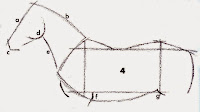Advertisement
Learning to paint naturalism paintings is a rewarding and challenging endeavor that involves mastering various techniques, observing the natural world keenly, and developing a deep understanding of the principles of realism in art. Naturalism in painting aims to depict subjects in a highly realistic and detailed manner, often mimicking the appearance of the natural world as closely as possible. Here is a step-by-step description of the process:
1. Study the Basics of Art: Before diving into naturalism, it's crucial to build a strong foundation in art fundamentals. This includes understanding concepts like composition, perspective, color theory, and various drawing and painting techniques.
2. Acquire Necessary Materials: Gather the materials you'll need, such as high-quality brushes, oil or acrylic paints, canvases, and an easel. The choice of materials can significantly impact the final result, so invest in the best you can afford.
3. Learn Drawing Skills: Naturalism starts with accurate drawing. Develop your skills in sketching and drawing, paying attention to proportions, anatomy, and capturing fine details.
4. Observe and Study Nature: Naturalism requires a keen eye for detail. Spend time observing your subjects in nature, whether it's landscapes, animals, plants, or human figures. Take photographs or make sketches to use as references in your work.
5. Master Techniques: Practice various painting techniques, such as blending, layering, glazing, and impasto. Each technique contributes to the level of detail and realism in your paintings.
6. Understand Light and Shadow: Lighting plays a crucial role in naturalism. Study how light falls on objects and creates shadows. Learn to accurately depict highlights, mid tones, and shadows to give your paintings depth and volume.
7. Color Mixing: Naturalistic paintings often require precise color mixing to capture the subtleties of the natural world. Learn how to mix colors to match what you see accurately.
8. Start with Still Life: Begin by painting still life subjects. This will allow you to practice rendering textures, materials, and intricate details in a controlled setting.
9. Progress to Landscapes and Portraits: Once you feel confident with still life, move on to more complex subjects like landscapes or portraits. These require a deep understanding of anatomy, facial expressions, and environmental elements.
10. Seek Feedback and Critique: Share your work with fellow artists or art teachers to receive constructive feedback. Critiques can help you identify areas for improvement and refine your skills.
11. Practice Patience and Perseverance: Achieving naturalism in painting takes time and dedication. Be patient with yourself and keep practicing regularly to refine your skills.
12. Study the Masters: Analyze the works of renowned naturalist painters like John James Audubon, John Constable, or Johannes Vermeer. Learning from their techniques and approaches can provide valuable insights.
13. Experiment and Develop Your Style: As you become more proficient, don't be afraid to experiment with your style. Your unique approach to naturalism will set you apart as an artist.
14. Keep Learning: The art world is ever-evolving. Stay open to learning new techniques, exploring different subject matters, and staying inspired by the world around you.
Remember that becoming proficient in naturalism painting is a journey that requires dedication and continuous improvement. Over time, you'll develop your own unique style and voice as an artist while capturing the beauty of the natural world in your paintings.









